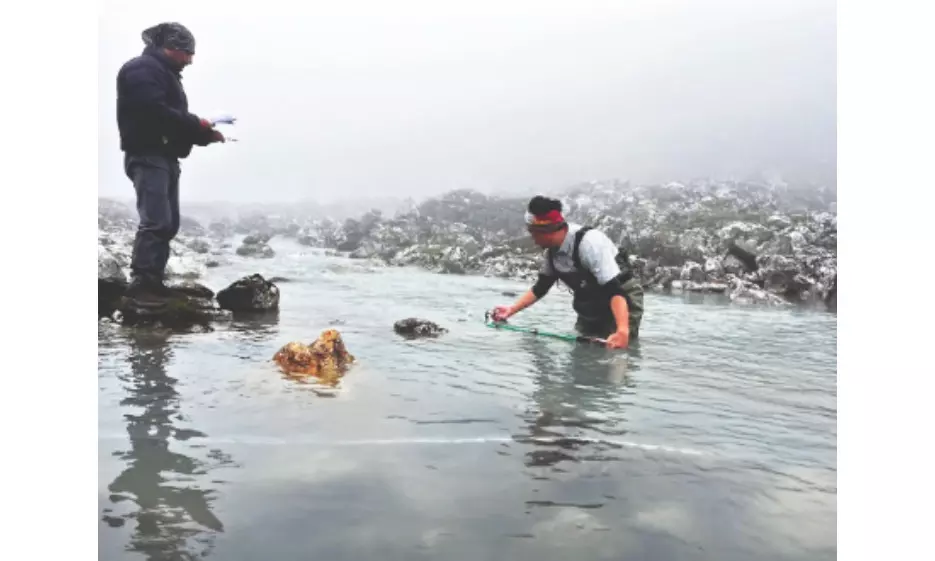Sikkim undertakes glacial lake risk assessment in Gyalshing district

Darjeeling: In a stride towards disaster preparedness and climate resilience, the Science and Technology Department of Sikkim, in collaboration with the Mines and Geology Department, has completed a major scientific expedition aimed at assessing high-risk glacial lakes in the Gyalshing District of West Sikkim. This initiative gains critical importance in the aftermath of the devastating Glacial Lake Outburst Flood (GLOF) that struck North Sikkim on October 4, 2023, triggered by a sudden breach of South Lhonak Lake. The flash flood wreaked havoc along the Teesta River basin, resulting in significant loss of life, destruction of infrastructure, and large-scale displacement. The disaster underlined the urgent need for comprehensive hazard assessments of glacial lakes across the state.
From June 19 to July 1, a multidisciplinary team of eight experts—including glaciologists, geographers, geologists, and civil engineers—undertook an extensive field mission focusing on Tikip Lake, Bhaley Pokhari, and Doodh Pokhari, three high-risk glacial lakes located in the remote and ecologically fragile highlands of Gyalshing. The team accessed these sites through a rigorous 4–5 day trek from Yuksam, the last motorable point in the district. Key activities of the expedition included Electrical Resistivity Tomography (ERT) surveys at all three lake sites. These high-resolution investigations are critical to evaluating the internal structure and integrity of the moraine dams holding these glacial lakes, identifying buried ice bodies, saturated sediment zones, and seepage pathways that may lead to future outburst events.
To bolster ongoing climate monitoring, the team also repaired hydrometeorological sensors near the East Rathong Glacier below Bhaley Pokhari, integrating them with the existing Automatic Weather Station (AWS) system. These sensors will provide continuous data on temperature, rainfall, humidity, and wind patterns. Additionally, discharge measurements were carried out at Bhaley Pokhari to assess current outflow dynamics. The department emphasized that these scientific efforts are vital for data-driven mitigation strategies to reduce disaster risk from potential GLOF events, particularly in the climate-sensitive Indian Himalayan Region. The findings will aid both state and national agencies in shaping early warning systems, strengthening glacial lake management, and enhancing long-term climate resilience in Sikkim. Incidentally in 2024 The National Disaster Management Authority (NDMA) had identified 16 high altitude glacial lakes in Sikkim as highly vulnerable.



